Self-Excavation Hurricane House is a conceptual house located near Louisiana coastline. This place has a history of hurricanes and their destructive effects. This is due to Louisianna’s location, which is along the gulf of Mexico and that is bordering Atlantic ocean storms that accelerate descending on the state from the coast of Africa where hurricanes are formed. You can read the Margot Krasojević’s explanations below.
It’s been recorded that hurricanes twist around the storm and they move in the same direction, which is anti-clockwise in Northern hemisphere and clockwise in South. This project uses hurricane’s incredible strength to turn part of the structure along its helicoid retaining wall. It can bury itself as it turns by using wind direction to mobilize its hydraulic pivots. This futuristic house can withstand environmental loads just like winds, it is flexible enough to move with the hurricane yet has enough resistance and weight to dig itself into its own excavated engineered landscape.
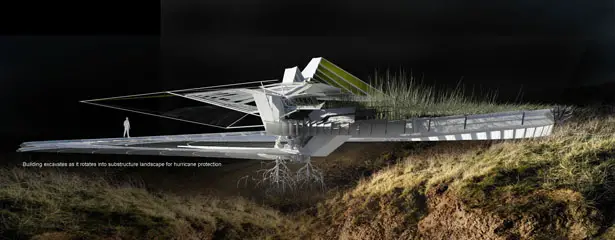
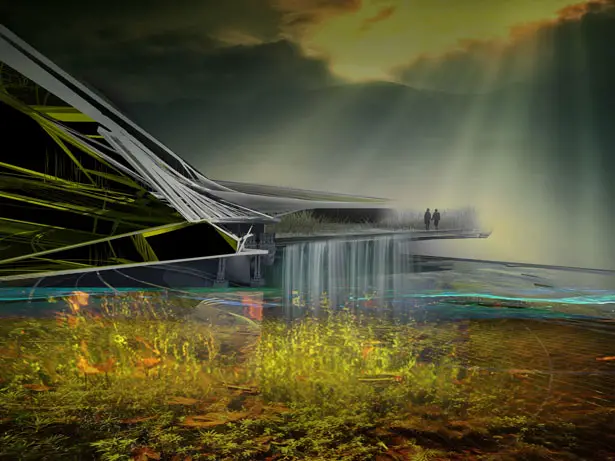
Self-Excavation Hurricane House by Margot Krasojevic is designed with superstructure that holds the living accommodation, it moves along a helicoid retaining wall, excavating as it does so. The core of this building uses reinforced concrete anchor under a grid of root-like cable foundations spread, then pinned into landscape. The anchor supports the superstructure using a series of hydraulic column lifts that pivot to turn the building, excavating its own substructure as the main living area moves. The immediate context provides different levels into which the building can rotate, burying itself into the already partly excavated landscape to protect itself from the hurricane. The architecture is choreographed by the wind direction of the hurricane, turning with it.

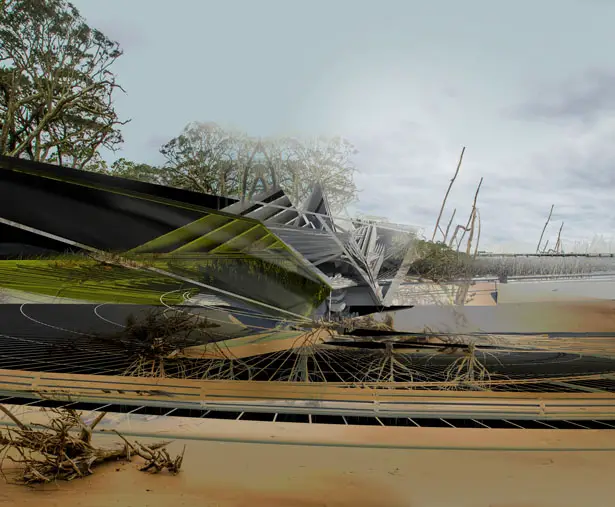

The excavated ground is pushed away whilst the artificial island surrounding the building acts as a canopy moving water away from the building. Solar panels line the island’s floor plate panels and edged by a ring of turbines, the turntable like design consists of sixty-four separate timber sections that act as an irrigation field directing rain and floodwater away from the building, these contained sections are deeper closer to the building in order to help with efficient drainage, they act like a water screw.
The building’s main living space is constructed from a pre-cast reinforced concrete frame, this lightweight structure has a series of rubber-coated, concertina wall sections, providing flexibility to adapt during the building’s movement and circulation needs. The house is enclosed by an artificial island which is landscaped to flush flood water away from the main living area, it’s surrounding topsoil navigates rain and flood water to drain into the deeper soil and away from the structure, similar to a bioswale. The macrophyte plants create a constructed wetland, this ecological residence aids land reclamation and water purification reducing any floodwater pollutants resulting from the hurricane. The wetland absorbs and temporarily stores floodwater releasing it slowly to avoid further damage to the surrounding area.
More images of Self-Excavation Hurricane House:

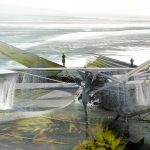
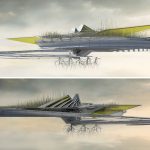


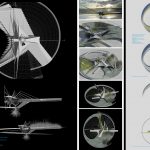
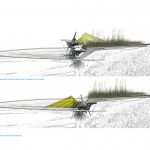
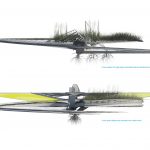

The force of the hurricane does not exert extreme pressure build up as it skims over and around the entire building of Self-Excavation Hurricane House, whilst the building’s movement reflects the force dissipating it as the scheme twists. The building’s dead load gives it resistance to turn slowly enough when exposed to sustained winds over 70 miles an hour without causing further damage to the structure, but fast enough to avoid the hurricane’s full force.
The origin and concept of this commission was for a spa in Kunming, China, on behalf of the Yunnan metallurgical group, the program and location has since changed due to the client’s interest in the research and support of renewable energy, ecological and environmental land preservation.
Tuvie has received “Self-Excavation Hurricane House” project from our ‘Submit A Design‘ feature, where we welcome our readers to submit their design/concept for publication.








Need this for FL AL, So TX, GA, NC SC too